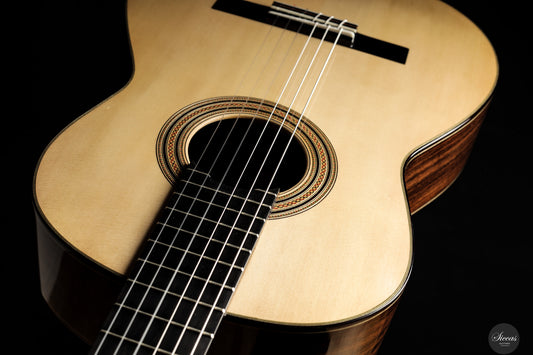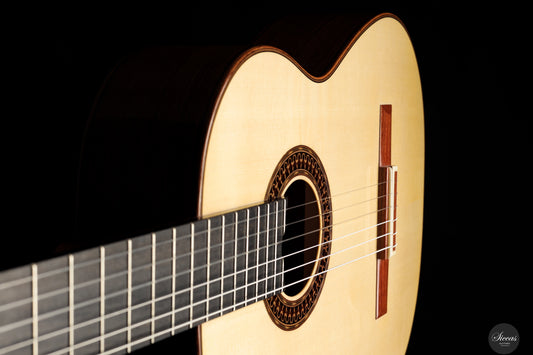Sold
Martin Jacob Weissgerber - 1957 - großes Spanisches modell
Martin Jacob Weissgerber - 1957 - großes Spanisches modell
Details
Details
Luthier:
Martin Jacob Weissgerber
Overview
Overview
























Video overview
Some text about the video block with SEO. Some text about the video block with SEO.


More details about the guitar
About the luthier
Martin Jacob Weißgerber (1911–1991) was the son of the legendary guitar maker Richard Jacob “Weißgerber” and continued his father’s workshop after his death. Although Martin initially pursued a career in teaching, he decided to join the family craft after the war and the death of his brother Arnold. Starting in 1945, he worked in the workshop, completed his master craftsman exam in plucked instrument making in 1949, and took over full leadership of the Weißgerber workshop in 1960 following his father’s passing. Martin Jacob was a quiet and modest man who lived in the shadow of his charismatic father. Nevertheless, he carried on the guitar-making tradition with great care and technical skill. His instruments are known for their high craftsmanship and are characterized by clarity, lightness, and tonal balance—qualities that had also made his father’s guitars famous. He completed many of the unfinished instruments left behind by his father and ran the workshop in Markneukirchen until his own death in 1991—without ever gaining the same public recognition as Richard Jacob. Today, Martin Jacob’s guitars are regarded as underrated masterpieces and as the final expression of a unique Vogtland guitar-making tradition.About the guitar
This beautiful guitar was built around 1960 by Martin Jacob. Although it does not bear a label — which is quite common for Weissgerber guitars — there is an ‘MJ’ stamp inside, indicating that the instrument was made for Martin Jacob. A distinctive feature of this guitar is that, in addition to the ‘MJ’ stamp, it also carries the same Weissgerber brand stamp that was used by his father, Richard Jacob Weissgerber. This can be seen as a sign of his artistic emancipation: in terms of construction and sound quality, his guitars are in no way inferior to those of his father. Due to its dimensions and body shape, the guitar is classified as a “Große Spanische Modell,” closely inspired by traditional Spanish guitar design. The instrument was once owned by Maria Jacob, daughter of Martin Jacob, and it remains in excellent condition, with no structural issues. In terms of sound, the guitar delivers dry, punchy, and present basses, while the trebles are clean, clear, and focused. Structurally, the spruce soundboard features four fan bracings, complemented by two V-shaped bars angled outward toward the sides. This unusual yet effective internal bracing contributes to the guitar’s rich resonance and overall stability. A fine example of German craftsmanship with the soul of Spanish guitar tradition—a rare and expressive instrument with both historical and musical value.
Otto Rauch is a German guitar maker from the small town of Obermoschel in Rheinland-Pfalz. With over 35 years of experience as a guitar maker, he is one of the German pioneers of double-top construction. After repairing a Matthias Dammann guitar in the early 1990s, Otto Rauch began building doubel-top guitars. At first, he used cedar struts and then a balsa core, a construction he continued to develop over the years. While helping a friend set up his violin making business, Otto Rauch came across the name of the 18th century Venetian violin maker Domenico Montagnana. His cellos are praised for their dark tone, fantastic sound volume and enigmatic construction. As these three attributes reflect Otto’s construction, he adopted the name, and the Domenico Montagnana model was born.







































































